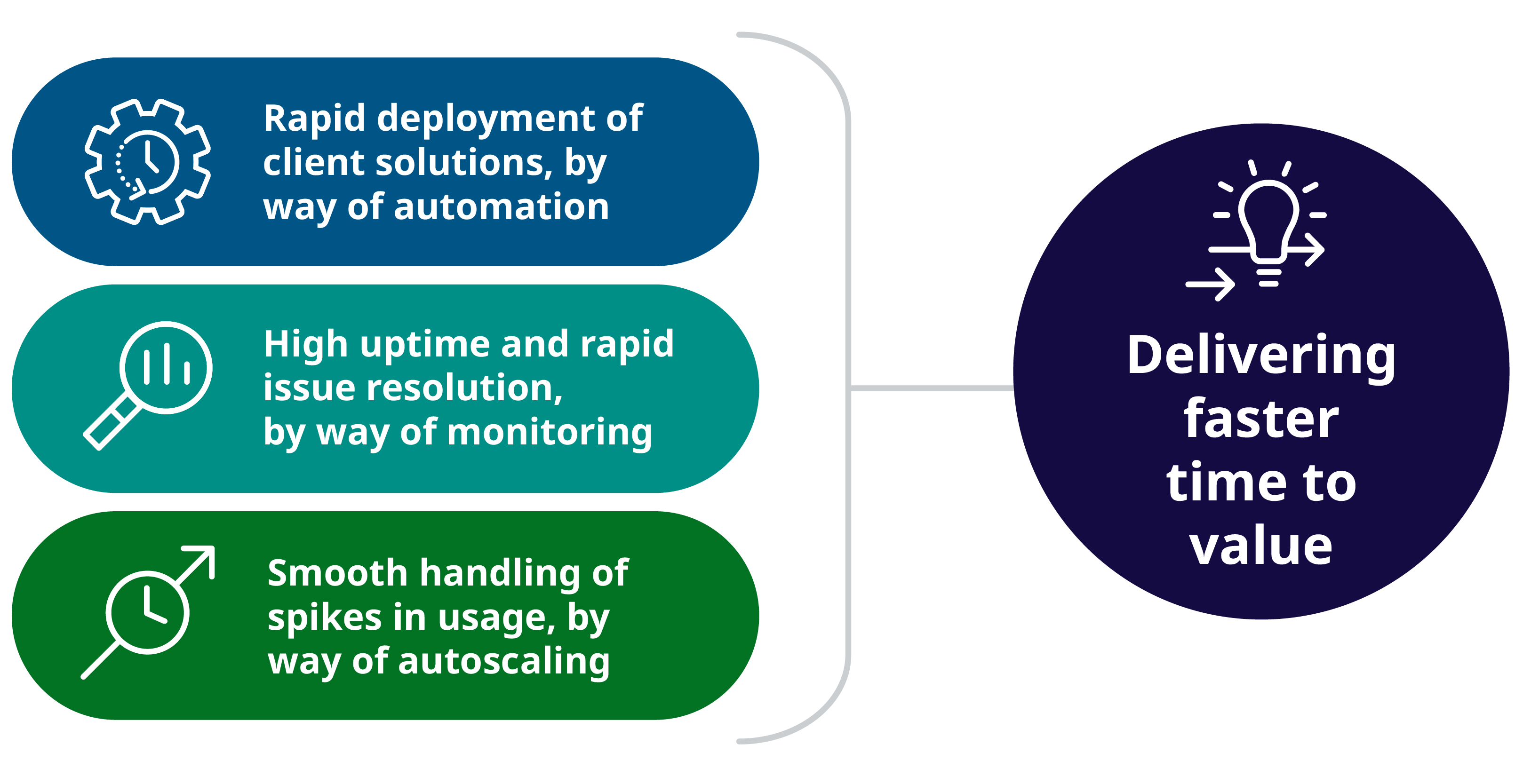IQVIA Orchestrated Analytics connects actionable, intelligent insights across commercial teams to empower improved strategic decision making.






















- Blogs
- Smarter and Faster: How SRE Can Transform Commercial Operations in Life Sciences
Considering the rapid pace at which powerful new Artificial Intelligence and Machine Learning (AI/ML) tools are being developed, it’s no wonder that many life science organizations are concerned with their ability to keep up with innovation. These organizations are attempting to strike a delicate balance in the timelines required. Speed is essential to stay competitive, but complex new tech can take a long time to learn, test and implement. It’s even possible for new solutions to become outdated before they’re fully deployed.
What do you do when fast tech implementation matters more than ever, but introducing new products and solutions into commercial operations is a difficult and risk-heavy proposition? Site Reliability Engineering (SRE) offers answers.
What is SRE?
Based on the principles of automation, monitoring and rapid incident response, SRE combines software engineering and systems administration to improve the reliability, scalability, and efficiency of large-scale distributed systems. SRE teams are responsible for designing, building, and operating systems that can withstand failures and disruptions while continuing to deliver high-quality services to their customers.
SRE can vastly improve speed and reliability in two key areas: fast implementation of new technologies and overall system uptime. Many of these improvements come by way of automation. By automating repetitive tasks, reducing the risk of human error, and freeing up engineers to focus on more strategic work, SRE can help to improve the quality, time, and cost-effectiveness of onboarding new technology and its related services.
When it comes to deploying new technology in commercial operations, automation can make the difference between a two-year deployment and one accomplished in just 30 days. Acquisition of server space and computing power, formatting physical and virtual systems, choosing and deploying an operating environment, orchestrating containers and microservices, ensuring zero-trust security — all of these and more can be automated to accelerate deployment and greatly reduce errors and downtime.
During and after deployment, monitoring is also key. SRE monitoring involves collecting and analyzing information about an organization’s data infrastructure and applications to identify and fix problems before they impact users. SRE teams also monitor the data collected from these systems and use that information to identify trends and patterns that can help improve performance.
Through comprehensive monitoring, SRE teams can ensure that the system is always available and performing as expected. This is essential for delivering a frictionless experience, especially when users expect to be able to interact through multiple channels, such as web, mobile and phone.
When deploying and utilizing new technologies, life science commercial operations also face a number of capacity-related challenges. These systems are often complex and heterogeneous, but they also need to be scalable to handle changing workloads. Additionally, these systems can generate a large amount of data very quickly. And the systems and their data are all subject to strict regulations.
With combined expertise in software engineering and systems administration, an SRE model has the specialized knowledge and skills to tackle the full range of capacity management and security/compliance challenges. What’s more, all the SRE capabilities and services (automation, monitoring, security) that work to ensure new technologies are deployed quickly and reliably, also work to reduce costs (by optimizing infrastructure) and increase customer satisfaction (by improving availability and reliability).
SRE in action at IQVIA
AI/ML tools are revolutionizing the way businesses operate, and in life sciences they enable analytics organizations like IQVIA to gather insights and predictions from large datasets and to use that information to make informed decisions. However, building and maintaining platforms such as KPI Library, Next Best Action (NBA), Personalization Hub, Incentive 360, etc., is a complex task that requires careful planning, attention to detail, and a reliable infrastructure — all good reasons why organizations choose IQVIA to deploy their critical platforms and services.
IQVIA’s approach is to apply SRE in order to deliver reliable solutions and a high degree of customer satisfaction — no matter the platform or the services. Utilizing SRE principles and practices across service delivery platforms enables a range of benefits to our clients, including:

|
“SRE’s flexibility is one of its most attractive features, especially when implemented with scientific precision. Its infrastructure and systems are highly modular, which enables IQVIA to customize our services to meet our customers’ needs by simply turning functions on and off. And we can plug it in with as little as one line of code.” - Georgi Ekimov, Service Reliability Engineer |
Get fast results with SRE
Site Reliability Engineering has become essential for timely implementation and efficient operation of new technologies in commercial operations. Applying SRE principles and practices helps to minimize downtime, reduce errors, and improve overall system performance. This in turn enables data scientists and developers to focus on building better AI/ML models and applications that ultimately inform faster enterprise-critical decisions.
IQVIA Orchestrated Analytics is leading the way in demonstrating the benefits of SRE and utilizing these principals to accelerate a competitive advantage for our life sciences clients, as exemplified in the Everest Group Life Sciences Operations PEAK Matrix® Assessment 2023, where we earned the highest position in the Leader quadrant.
You may also be interested in
Snowflake Selects IQVIA as Global Leader in Healthcare Measurement & Attribution
How to optimize adoption and ROI of business intelligence technology
KPI Library
IQVIA's life sciences domain intelligence made available as connected actionable insights, for agile decision-making and fast deployment & adoption
CS - Next Best - Boosting Sales Performance
Open AI/ML-driven platform allows Top 10 pharmaceutical company to maintain hundreds of algorithms in-house while scaling easily to support global sales operations
Related solutions
Turn insight into action by surfacing behavior-changing intelligence within daily workflows to deliver the right message at the best time for greater HCP satisfaction.





